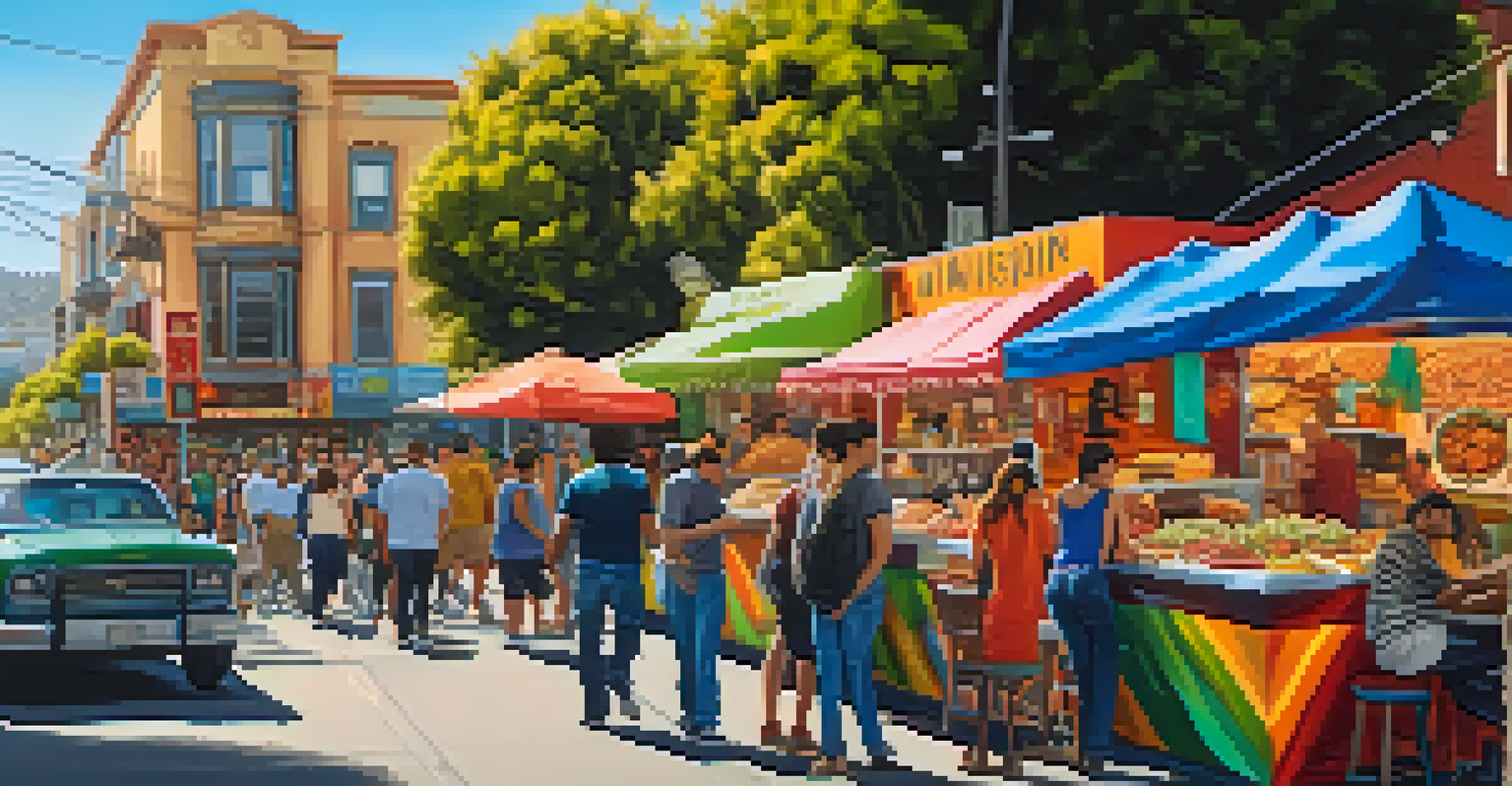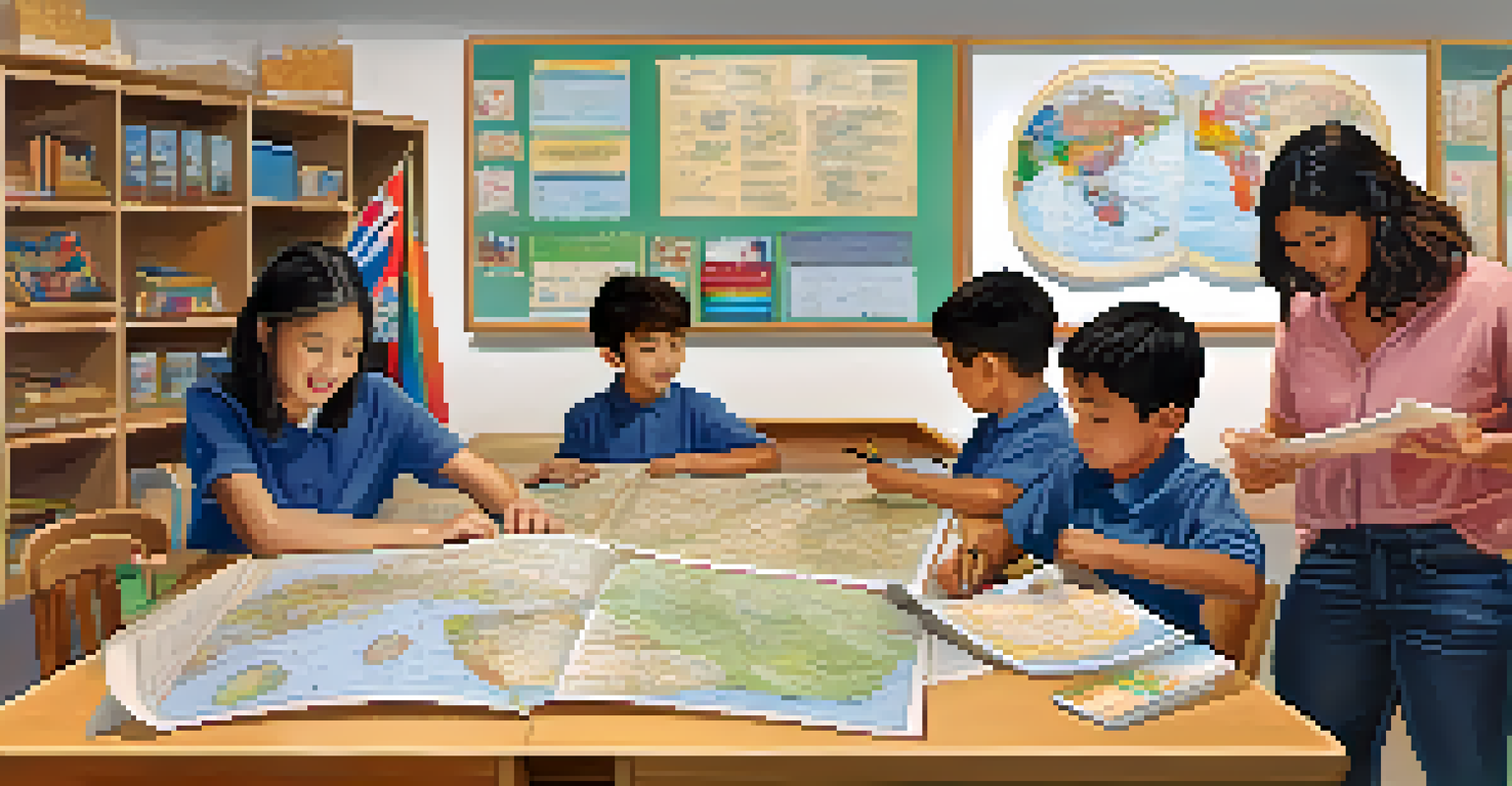Historical Overview of Languages Spoken in San Francisco

The Indigenous Languages of San Francisco
Long before European settlers arrived, the area now known as San Francisco was home to various Native American tribes, including the Ohlone. These tribes spoke several distinct languages, which were vital for their cultural identity and daily communication. The Ohlone language, in particular, is a prominent example of the rich linguistic heritage that existed long before colonization.
Language is the road map of a culture. It tells you where its people come from and where they are going.
These indigenous languages conveyed not just words, but also rich traditions, stories, and a deep connection to the land. Sadly, many of these languages faced decline due to the impacts of colonization and the arrival of settlers. However, modern revitalization efforts are underway to preserve and teach these languages to new generations, highlighting the importance of cultural heritage.
Understanding the indigenous languages offers a glimpse into the history and identity of the original inhabitants of San Francisco. It reminds us that language is not just a means of communication but also a vessel of culture and history.
The Spanish Influence on San Francisco's Language Landscape
With the arrival of Spanish explorers in the 18th century, the linguistic landscape of San Francisco began to shift significantly. Spanish became the dominant language of the region, influencing local culture, architecture, and even place names that we still see today. The Mission District, for instance, reflects this rich history with its names and cultural elements rooted in Spanish heritage.

Spanish not only served as the language of government and religion but also enriched the local vernacular. Many English words and phrases in the area have Spanish origins, especially those related to food, such as 'taco' and 'salsa.' This blending of languages has created a unique cultural tapestry that characterizes San Francisco.
Rich Indigenous Language Heritage
San Francisco's indigenous languages, particularly those of the Ohlone tribes, are vital cultural elements that are being revitalized today.
Today, Spanish remains one of the most widely spoken languages in San Francisco, serving as a testament to the city's multicultural heritage. It continues to thrive in local neighborhoods, schools, and community events, forging connections between generations of residents.
The Gold Rush and the Rise of Multilingualism
The California Gold Rush of the mid-19th century acted as a magnet, attracting people from all over the world, each bringing their own language and culture. This influx led to a remarkable increase in linguistic diversity, with languages such as Chinese, Italian, and Portuguese becoming prominent in the city. The bustling city streets echoed with a symphony of languages as new communities settled in and established their roots.
The limits of my language mean the limits of my world.
Chinese immigrants, in particular, played a crucial role in shaping San Francisco's identity. Cantonese became one of the dominant languages in the city, especially in neighborhoods like Chinatown, which remains one of the oldest and largest Chinese communities outside Asia. The establishment of cultural hubs helped preserve these languages and traditions amid a rapidly changing environment.
This period of multilingualism laid the groundwork for San Francisco's identity as a melting pot of cultures. Today, the city's diverse population reflects this rich history, with multiple languages coexisting and thriving in various neighborhoods.
The Impact of Immigration Waves on Language Diversity
Throughout the 20th century, San Francisco continued to experience waves of immigration, each bringing new languages and cultures to the city. Groups from Mexico, the Philippines, Vietnam, and many other countries have settled in the area, contributing to its linguistic mosaic. This ongoing trend has made San Francisco one of the most linguistically diverse cities in the United States.
Each immigrant community has enriched the local culture, adding their languages to the mix. Filipino languages such as Tagalog and Ilocano, for example, have become increasingly common in the city's neighborhoods, while Vietnamese is prominently spoken in areas like the Tenderloin. This diversity fosters a vibrant atmosphere where multiple languages coexist, enhancing the community's cultural fabric.
Diverse Languages from Immigration
The city has become a melting pot of languages due to waves of immigration, significantly contributing to its linguistic diversity.
As these languages continue to evolve and adapt, they create a dynamic linguistic environment that reflects the city's history and ongoing growth. The presence of numerous languages serves as a reminder of San Francisco's role as a gateway to opportunity and a haven for cultural exchange.
The Role of Education in Language Preservation
San Francisco's educational institutions play a vital role in preserving and promoting the city's diverse linguistic heritage. Many schools offer bilingual programs that teach students in both English and another language, fostering an environment where multiple languages can thrive. Such initiatives not only help maintain language skills but also promote cultural understanding and appreciation.
Language immersion programs, particularly in Spanish and Mandarin, have gained popularity and have been shown to improve cognitive skills in students. These programs encourage children to become proficient in multiple languages, preparing them for a globalized world while preserving their cultural identity. Through these efforts, the next generation is equipped with the tools to navigate a diverse society.
Community organizations also contribute significantly to language preservation by offering classes, workshops, and cultural events. These initiatives create spaces for individuals to learn their heritage languages, ensuring that the rich linguistic diversity of San Francisco continues to thrive.
Modern Linguistic Trends in San Francisco
In today's globalized world, San Francisco continues to evolve linguistically, with new trends emerging as technology and communication change. The rise of tech companies has introduced a new lexicon into everyday conversations, blending English with terms from various languages, especially in startup culture. This fusion creates a lively linguistic environment that reflects the city's innovative spirit.
Moreover, social media platforms facilitate connections among diverse communities, allowing languages to intermingle and adapt. Users often communicate in multiple languages, leading to the birth of new slang and expressions that resonate with younger generations. This dynamic interaction highlights the fluid nature of language in a modern context.
Education's Role in Language Preservation
Educational initiatives in San Francisco are essential for maintaining and promoting the city's diverse linguistic heritage through bilingual programs and community involvement.
As language continues to evolve, it remains a powerful tool for connection, identity, and expression in San Francisco. The city's landscape will undoubtedly keep changing, but the rich tapestry of languages that define it will endure.
The Future of Languages in San Francisco
Looking ahead, the future of languages spoken in San Francisco is both promising and challenging. With ongoing globalization, the city will likely continue to attract new communities, adding even more languages to its vibrant mix. However, this also means that efforts to preserve endangered languages will become increasingly important.
Community engagement and educational initiatives will play a crucial role in ensuring that diverse languages are not only maintained but celebrated. By fostering an environment that values linguistic diversity, San Francisco can continue to be a beacon of multiculturalism in the U.S. It's vital for residents to engage with and learn about the languages around them, promoting understanding and coexistence.

Ultimately, the future of languages in San Francisco rests in the hands of its residents. As they continue to share their languages and stories, the city will remain a unique blend of voices, reflecting its rich history and paving the way for future generations.